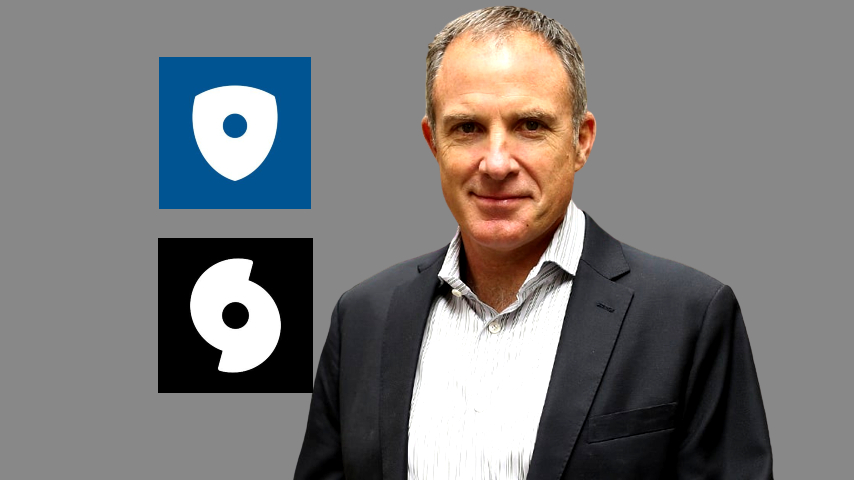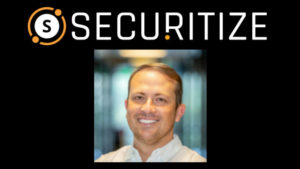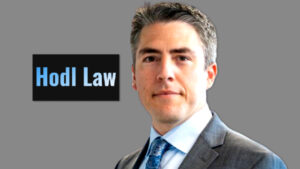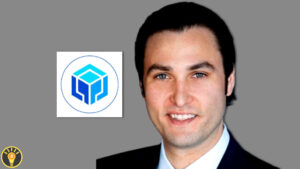Jack McDonald is the CEO of PolySign & Standard Custody. In this interview we discuss the latest updates with PolySign and Standard Custody, BNY Mellon launching crypto custody services, BlackRock and other institutions entering the crypto market, Tokenization of assets, SEC Ripple XRP lawsuit, Crypto Regulations, CBDCs and more.
Transcript
Welcome back to the “Thinking Crypto” podcast, your home for cryptocurrency news and interviews. With me today is Jack McDonald, who’s the CEO of PolySign and Standard Custody. Jack, great to have you back on.
- Thanks for having me. Always good to be with you.
- Well Jack, folks are always curious about the building that you and the folks at PolySign and Standard Custody are doing, and I wanted to start off with that. What’s new on your end? Any new services or things you wanna highlight?
- Yeah, thank you. We’re a good four, almost five months into the acquisition of MG Stover that we made in the springtime, which is a really exciting development for us. We, we basically become the first vertically integrated service provider for institutions with both custody and full fund administration. And I’m sure we’ll be talking about that later as some of the bigger asset servicing firms are now stepping into the space. So there’s a lot to do there, both from a client overlap standpoint as well as a, an opportunity really to pull data together to service our clients. And more and more we’re seeing really positive trends in the industry, a lot of positive feedback from current and perspective clients to bundle those services together. So we’re very excited about that. Putting the businesses together at the back end is pretty straightforward, but where the more strategic thinking goes around, what kind of data? How should we present that data? What sort of services do our clients really want and need, and where are the gaps in the current market? And so we’ve been busy to say the least.
- Well, busy’s good. And sounds like you guys are heads down building and just onboarding different clients and so forth. Are there plans to add support for new tokens or any additional solutions or services as it relates to crypto, maybe staking and so forth?
- Great question. We’re always adding new tokens. We are up to, I think 19 or 20 tokens and we’ll have 30 by the end of the year. We’ve also developed a new engine that we believe will be able to allow us to onboard new layer ones and add staking support within four to six weeks. So that really accelerates the ramp up time for us to do that. There’s a whole regulatory component of that as well, where we want to ensure that the assets that we’re onboarding meet the different asset vetting requirements that we’ve been pre-approved for with our regulator. So it’s a big part of our, of our mission. We also think about how to holistically service our clients with the assets that they own. Liquid staking, we’ve got some really exciting partnerships that we’re forging ahead with there and staking of other layer ones. Obviously East staking’s a big topic of conversation that we’ll be ready for the market when that time has come. And also working on a bit of a Skunk Works project that we’ll be rolling out at the end of the year to help managers, particularly VC oriented managers for some private key storage, almost a disaster recovery like service, which I’m, I’m really quite excited about because it doesn’t exist today in the market.
- I wanted to quickly ask you about something you mentioned, and that is, you said you’re licensing pre-approved regulatory approval, I should say, excuse me, to handle certain types of assets. Can you tell us a bit about that? Is it like a set list of assets or is it just kind of a, a, a, a test, so to speak? Well, does this asset meet these certain requirements before we can add it or you can add it to your portfolio?
- So I’ll speak to the way it works in New York, and there are three or four other states that, that have trust companies approved to support crypto custody. Nevada, Wyoming, South Dakota, to name those three, really. The way it works in New York is that there’s a pre-approved list of assets, a green list of assets that are on the DFS website that is a custodian or trust company you do not need preapproval to support them. Bitcoin, Ethereum, etc. When you go outside of that list, some, but not all of the New York licensees, we happen to be one of them, a select group, have our own pre-approved policy for vetting new assets that are not on the pre-approved list. And so what we do is go through that process. We use some third party analytics and support digital, asset research being one of them, essentially creates a tear sheet on the asset that goes through a number of different considerations around concentration analysis, essentially running the, how we test against the assets to determine in a best guess whether or not the asset will ultimately be deemed to be a security. And if it is, is a properly registered as such. And so we vet the asset internally within standard custody, we take it to our board. If the board approves our recommendation, then we can bring that asset into the platform and then we have an obligation to report to the regulators in arrears after we’ve done that. And so that’s, and then fully documented, you know, each one of those assets. So there’s definitely a process under which you have to go through to do that. Being pre-approved in advance will help our process along because we essentially are more in control of our ultimate destiny rather than having to go each time to the regulator and, and asking for permission, as you might imagine with, you know, regulators in general, there’s still a lot of uncertainty, which I’m sure we’ll talk about today. And so not knowing exactly what the strict requirements are, make it a little more challenging, but I feel like we’ve got a good process. Just today we ultimately decided not to onboard an asset because we weren’t comfortable with a number of those considerations that we learned through our research. And so we’re not gonna be moving forward. So it it is a process.
- For sure, and it’s certainly a challenge as I can imagine, and not only for you, but for other industry players who are trying to determine what’s the security and what’s not. But we’ll talk a bit more about that later. Does the portfolio or a list of assets also include stable coins or is it just other crypto assets or.
- It does, there’s there’s definitely stable coins on there. And in the case of our license, we’re also able to custody other types of securities that may not be a cryptocurrency. And while that’s not our primary focus, you could envision a world where IBM stock gets tokenized or digitized and there’s a digital security. More traditional assets getting tokenized another big part of our business, and that’s something we can custody as well. So while most of the focus tends to be on cryptocurrencies today, there’s a much broader universe we believe of what the future capital markets are going to look like and what our role is gonna be like in that, in that segment of the industry.
- Yeah, absolutely. It just, I just recalled Hamilton Lane, I think the news was announced last week, right? You’re gonna tokenize three of their funds, so to your point, different securities and, and commodities and even real estate and things like that will be tokenized on the blockchain.
- That’s right. And you saw the news from KKR a few weeks prior, so those are two big names entering in the space. It makes sense when you think about different types of assets that may either be too illiquid or too expensive, i.e. not accessible to a lot of investors. One of the benefits of tokenization and digitization is to be able to bring those type of assets to the masses, if you will. There’s obviously a lot of consumer and investor protection concerns that the regulators appropriately have. And so finding that right medium I think will be interesting to see how that pans out. But that is a big area of focus for us. We’ve got a product that we’re currently calling PolyNet that is geared towards servicing that future tokenization and digitization specifically focused on using a, a blockchain that we’re building to provide instant atomic settlement. So that’s a really exciting piece of our story that we’re getting a lot of interest from large buy and sell site firms when they see the future may not necessarily have a, a strong view on the role of cryptocurrency, but very much believe not only in the power of blockchain technology, but also in our collective role in this industry of rewriting a new operating system for capital markets and what that’s going to look like. And I think that’s where Hamilton Lane and, and KKR are going with that.
- Yeah, absolutely. And, and Jack, I know last time I asked you about this and, and there’s probably still limited information that you can give, but the blockchain that you’re building, the proprietary blockchain, I’m assuming it’s a private blockchain, it will not be public and any of new details or updates around it that you can share?
- Well, two things to distinguish. We have three, three businesses right now going on. We have the MG Stover business where we’ll spend, you know, a lot of our time and effort and technology resources trying to continue to improve that business from both an efficiency standpoint as well as the, the client user experience. We’ve got Standard Custody and Trust, which has a private blockchain at our core that we’ve built. And then for this PolyNet business, we’re building a, a blockchain that ultimately we, we envision will be a public chain. Right now it’s really a, a private permission chain or a bit of a hybrid, but you could envision over time that being a public chain with potentially a token. We’re spending a fair bit of time watching the regulatory environment and understanding it’s hard when you don’t really know what the, what, what will be deemed to be a security, what won’t, what’s a commodity, what’s a currency? So not having that, that regulatory clarity impacts many investors and also service providers in the, in the industry. And so that’s something that we’re certainly mindful of.
- Quick question on the PolyNet blockchain. Will, will, is that a layer one or is it like a layer two on top of an existing layer one?
- You can think of it as a layer one with the caveat that we’re not storing assets on that chain. Really our focus is going to be to memorialize different types of transactions. We want to essentially attest to a series of preconditions that may be met. So you can envision a world where you have cryptocurrency. I have tokenized interest in KKRs fund. Sally has a fractional interest in a private company and Jenny has some Fiat currency and we wanna trade those assets between us. Each one of those transactions can take place in different markets or different islands, if you will today, but there’s nothing really connecting them. So what we’re building is a network of networks which will take attestations and memorialize them. So you have, I believe we in the example, had you having cryptocurrencies. So you’ve got an account at let’s say Standard Custody. You’ve got a million dollars with of Bitcoin. And we can attest to that. I’ve got private company shares and we’re using Carta as our transfer agent. And we can attest to the fact that Carta, that Jack has, you know, a million dollars worth of SpaceX shares at, at Carta that are unencumbered in my name and free to trade and, and on and on. And once all those conditions are met, essentially a smart contract like escrow service would, would allow the instant atomic settlement of those transfers to go through. And so that’s where we’re using the blockchain for, if that makes sense.
- Yeah, and I’m just thinking about the, the world that’s coming, the token economy and like you mentioned, atomic settlements could be 24/7 trading. There’s no opening or closing bell.
- That’s right.
- And more of a global distribution of those assets. A brave new world.
- It is a brave new world. It’s exciting to think about. It’s scary as well. You know, you think about 24/7 trading and what that means and, and I think all of us in crypto seem to be getting less sleep than we may have been used to a decade or so ago, or five years ago even. And so it’s hard to envision true capital markets that operated on a 24/7 basis that are accessible to all. But it feels to me like that’s where we’re going. And I think the regulators will have to put some, some curbs around that just to make it manageable. But certainly the technology exists to enable that to occur, and I don’t think it’s that far off in the future.
- Hmm. I wanted to ask you about if there were any updates around your current partnerships. I know Cowen, you mentioned MG Stover, there was others or any updates, anything interesting that’s happening?
- Well, I reflected on the MG Stover acquisition. We could not be more excited with the team, with the client base that, that the, the, the MG Stover business serves today. We have an upcoming conference in, in San Francisco in early November, the CoinAlts conference, which really a customer and client conference. We’ll be getting them all together and starting to talk about different facets of the business. So we’re, we’re very excited about the Stover side of the business. Cowen Digital continues to be a really supportive partner of ours. They’re doing really exciting things, not only around spot and derivatives trading, but also looking at how to build out a lend-borrow business with some strategic investments that they’ve made and thinking about a broader prime brokerage-like offering. And so we play a pivotal role in their plans. We’ve recently just been approved as a money transmitter in Connecticut, which is where Cowen Digital is, is headquartered. And so the door has opened there very, very abruptly for us to do more and more business with them, which we’re quite excited about. We think about the staking partners, so the Blockdaemon and Figments of the world as, as core partners of ours. We’re also talking to some trading platforms, kind of aggregators if you will, as well as other types of software providers, even some that are in the, in the custody space that we could potentially add a lot of value to and have a symbiotic relationship. I think everyone is looking at the current landscape and thinking about how we can help to usher in more institutions and service them holistically. And from day one, we’ve always had an open architecture approach. So we don’t want to have a closed loop system where we have to provide every service that our clients will need. Quite the contrary, we believe in this segregation of, of church and state, the separation of duties. We think Chairman Gensler is certainly leaning in that direction and so we’re quite confident in the approach that we’re taking where we have a service offering to introduce to clients. We certainly want to do that. And where we can partner with other best of breed providers, we’re gonna do that. And sometimes we meet new providers through clients of ours that we don’t have connectivity with. And where it makes sense, you know, we want to establish those connections.
- Yeah, absolutely. Jack, yesterday we got some big news, BNY Mellon, they have launched officially their crypto custody service, America’s oldest bank and I believe they’re the largest custodian as well. What are your thoughts on this and are you working with them in any way?
- Well, as I, as I learned as a small child, imitation is the best form of flattery. So, you know, we’ve, I think in the industry, been expecting this for some time since they led the fire blocks around a year or two ago. I think it’s big news, it reminds me of when Fidelity entered the space a number of years ago and I immediately thought this is really credentializing for the industry. It really gives confidence to a lot of other buy and sell site firms who have been watching the digital asset crypto space. And when prices are high, there’s a lot of FOMO when prices are down, maybe some more hesitancy around it. And yet you see someone like BNY Mellon, who have been working at this clearly for a couple years, enter into the space and albeit with a limited offering to start, I think it’s great. I think it can only help encourage other providers to come in and other investors to come in, which will be great for the ecosystem. That said, I think there’s still lots of questions around what exactly they’re offering is going to be, I think it is ultimately, and, and they’re really following the steps I would say of Cowen, who is the first big investment bank to come in and have an offering in the space. Slightly different approach, which is more trading and, and custody centric. Where BNY Mellon I think is custody and they talked about, you know, know potentially doing some record keeping as well, not full blown fund administration. Other, the large custodial banks and asset servicing firms have either put out some headlines that they’re looking at it. And certainly we talk to a lot of these organizations and know that there are teams of people who are focused at, at building solutions. When the big clients start to allocate five, 10% to this space, they wanna be ready. And I think ultimately what’s gonna happen is you’re gonna see further entrants coming into the space, likely similar to BNY Mellon in a fairly narrow way to start. I continue to think you’re gonna see consolidation in the space, where other big banks are gonna come in and say the time to build is significant and if the market turns quickly and they wanna have a solution, they’re gonna have to either partner or buy firms like ours who are already established in the space, who have been at it for years, who have been building the requisite infrastructure. This is not easy technology to build and the incumbent players have built their entire business on a legacy framework, on a legacy operating system, if you will. And this is all brand new. So I do think there will be this intersection, but I think it’s gonna be adopting a lot of the new technologies in the new providers. It’s not something you do overnight.
- And I know, I believe it’s Tim Keeney who’s your vice president, he’s a former BNY Mellon alumni if you wanna call it that. And any, I’m sure maybe he can bridge the gap there to see if you guys can work together or am I reaching?
- Yeah, so I I didn’t answer that part of your questions. We’re currently not working with BNY Mellon. I think what the position they’ve taken is to buy software, i.e. fireblocks and, and other banks have announced partnerships with Copper, where they’re essentially licensing the software and then they’re choosing to build their own custodial offering as opposed to partnering. They could have hired us as a sub-custodian and gone that route, but they’ve chosen to build it, which makes sense when you think about, you know, the, the BNY Mellons or the Cities of the World who really have custody as their cornerstone and then build this surround sound of other services on top of it. Tim used to run all asset servicing there, including custody and fund administration. So from day one when Tim and I met, which is right as we were putting PolySign together, we both shared a view that there would be an evolving series of services that we build and layer on top of custody, but get custody right first, because that really is the core offering. Once you have custody of a, of a client’s assets, you can service that asset in lots of different ways and there will be corollaries to what exists in TradFi in the digital asset space. So whether it’s fund administration, which we’ve just done now with MG Stover, whether it’s the equivalent of a lend-borrow, and we’ve got some partnerships we’ll be announcing soon in that regard. Whether it’s things like staking or yield enhancement, all those services make sense once you get custody right. And so we’ve been methodical with Tim’s leadership as our vice chair in building out the business and we’ll continue to offer new services either organically, perhaps strategically through, through an acquisition or through partnerships to, to build out that ecosystem. As Tim likes to say, the, the big asset servicing firms like to earn at every turn. And so that’s the way those, those businesses, you know, succeed.
- Yeah, great point in highlighting that custody is the foundation and you gotta get that right before you can branch off and offer the different services. And maybe that’s part of, you know, the SEC’s delay in approving a bitcoin spot ETF and things along those lines where the custody has to be right and, and along with other things. But that, that’s certainly a key pillar.
- That’s a key pillar and it takes on new meaning now when you think about the whole web three, metaverse, NFTs, skins as a custodian, what does that mean to custody and NFT? What does it mean to custody, you know, a skin of, of a actor or, or an identity that exists in the, in the metaverse? And so those are areas that all I think of us in the custody space specifically are pushing into this new frontier and what we can do with the trust company license. I’m continually reminded of the value of having this trust company license. We at the end of the day, are a trust bank and there’s a lot you can do with that license. We’re obviously doing it in concert with our regulators in New York, but it provides a lot of flexibility and I think as capital markets evolve and as you have this intersection between traditional finance and the digital asset ecosystem, we’re gonna find new ways to support clients through the regulated and insured custodian that we have in New York.
- Hmm. In addition to BNY Mellon, I, I just tweeted about it earlier today. You look back at the past two to three months, you had BlackRock enter the market, you had news of Charles Schwab, Citadel and Fidelity launch. They’re working on a crypto exchange. NASDAQ also came out and said they’re launching crypto custody. It’s amazing what’s happening. I got into the market in 2016 and I couldn’t even imagine these big names getting into the asset class. What are your thoughts seeing it and, and I know you’re talking to some of these folks and you know, the Cowens of the world and so forth. What are your thoughts on the recent surge of these institutional investors coming in?
- Well, I, I would say a few things. It’s not surprising because we’re talking to these folks and/or their peers on, on a daily basis and we’re seeing the migrations that large asset managers are, are making in the space. I think what’s critical is that you actually are seeing some of these household names put their foot down and say we are, we are building out products and services. You’ve got the BlackRocks, you’ve got the WisdomTrees and others who are just massive asset managers who are moving deliberately into this space. And it can only be credentializing. I think it’s gonna have a very positive impact, frankly, on the regulators because those organizations have the ear of the regulators and they’re gonna force some regulation to come through, which I think is gonna be great. I think one of the biggest impediments right now to growth in this industry is the lack of regulatory clarity. And we’ve made great strides. I will say if I think back over the last six to 12 months and when I look forward, you know, not only here in the US but the G20 financial stability board, you’ve got the EU initiatives around MICA, you’ve seen legislation being introduced in, in Ukraine, South Korea, Bahrain, Brazil, you know, all within the last couple of months. And so I think we’re getting consistent progress. Can’t happen fast enough as far as I’m concerned, but it’s gonna be I think, really helpful not only for sell site firms like ours to understand what the, what the rules of the road are, but it’s also going to remove one of the biggest obstacles for institutions to come and invest into the space. And that’s really when you’re gonna see this waterfall of demand come. I’ve said for a long time, and I think I said to you last time we spoke, I think there’s three factors holding back institutional adoption in no particular order. It said regulatory clarity, it’s institutional great infrastructure and it’s just broad education and I think the industry is making, making steady progress on all three of those fronts.
- Yeah, you know, despite being a bit impatient myself that that, you know, Congress has not acted and put out some law, we have made a lot of progress this year. I mean, even from the President issuing an executive order, a lot of reports have come in, we had different bills come together from the Democrats and Republicans.
- That’s right.
- The Lummis-Gillibrand bill. So things are looking optimistic and, and you know, this is a hard question, but do you think 2023, we’re gonna maybe get the regulation around stable coins as well as the SEC getting it maybe an updated how we test on how to regulate crypto?
- I would hope so. I think we’re probably not gonna get a whole lot through the balance of this year just given the midterm elections and nobody really wanted to stick their neck out. But I would certainly hope, and if I had to put a chip down, I would say yes, we’re gonna get some regulation in 2023. It feels to me like the XRP case is getting forced into a, a certain decision point as both sides seem to have filed their motions for summary judgment. They agree on the facts and I think that’s gonna be a very pivotal ruling for the industry and I commend Ripple for really taking this on their back and, and fighting on behalf, you know, of the industry. So I think that’s a, a decision that one should expect. We should hear one way or another in 2023, just given the way the court filings have, have progressed. Stable coins certainly seem to be getting a lot of attention from a broad range of, of regulators in, in the US and so I would expect to see some regulation there and some of these other proposed legislations, bills that have been introduced. It feels to me like there’s some momentum there. And so I think if we’re having this conversation a year from now, we’ll look back on, on the year today, 2023 and seen some tangible legislation having been introduced. I certainly hope so.
- Yeah, absolutely. Jack, something that just came to mind and it’s along the lines of, of what you’re doing at Standard Custody. CBDCs are coming in hot and heavy. Every central bank around the world pilot testing, doing something different, they will be built on different blockchains. I don’t know if this makes sense, but are there, are you guys planning on how you can support maybe holding large amounts of value, you know, with CBDCs, and different CBDCs and different blockchains and having interoperability and things like that?
- So some of my peers when they listen to this, will and colleagues here will, will assume that I asked you to ask me that question because we’re spending a lot of time within PolyNet on doing just that and working with other organizations. There’s an organization that just got approval to work with the Bank of England and the Bank of International Settlements around a CBDC project that we’re, we’re potentially gonna be working with them and others. So this is very much of a focal point for us. We, we play a pivotal role, not a comprehensive solution, but a role in doing that. And you mentioned the word interoperability. I think we’re a long way off from having a uniform one blockchain that serves everyone’s needs. But you could have said the same thing about the internet 25 years ago where there was a bunch of number of, of different internet service providers and now there’s, you know, we really have one internet. That’s a long way off. In the meantime, I think our focus continues to be around building tools that are interoperable with other layer ones and layer chains, layer one chains. And particularly when you think about central bank digital currencies, by their very nature being sovereign backed, it’s gonna take a while before different countries agree to operate on a similar platform or uniform code. And so we’re trying to help bridge some of the gaps there and I think that’s gonna be really exciting space. As you suggest, there’s a lot of sandbox experiments going on and in some cases even more developed proof of concepts and so it’s an area that we’re keenly focused on.
- Yeah, absolutely. This is a little bit of a controversial thing.
- You can try me.
- So CBDCs, folks are worried of losing rights and that while CBDCs, I absolutely agree, have tons of benefits and it’s gonna help a lot of the unbanked and it’s gonna allow the economy to move faster and more liquidity and all that. And folks not having to wait on money, you know, whether they’re getting from the government or whatever it may be. But with that comes potential surveillance of what, how your money is being used and spent. And, and, and don’t get me wrong, I don’t think the US is gonna do this, but sometimes people look at China and they’re like, okay, I don’t wanna be, have a social score and my money frozen because of my political speech or freedom of speech. And, and, and then you just see this PayPal thing that just happened you know, over the weekend and, and you know, even myself, I’m just like, ugh man, what are these governments gonna do with this? Even though it brings a lot of benefits.
- Yeah, it’s a tough one to, to answer really because I think it depends on your own personal view around the government. Do you trust your government or not? I personally trust the government enough that I don’t, every time I pick up my phone, think someone’s listening in. I don’t think my, you know, Alexa machine or my Apple home is monitoring my every move. Yeah, it freaks me out a little bit when I, you know, look at a website here and then the next day it pops up in all my ads. But it just, it’s just something that I accept. I think ultimately there’s always going to be that risk and I think certain people are gonna view that risk differently and have to weigh whether or not you wanna live in a country where you have that concern or not. But it feels to me like the tide of the technology is irreversible, that it’s happening that way and it’s hard to envision going backwards to feed out our paper currency, you know, that we would have years down the road. So I think it’s coming to a theater near you whether you like it or not, let just say that.
- Yeah, and I think it it, while we do have the, you know, the legislative and judicial process here, we would probably have to let our representatives know there has to be some privacy enabled, at least with the digital dollar. We live in the United States.
- That’s right.
- Other countries, you know, it is what it is, but at least align the right to privacy with the constitution to our digital dollar at least.
- Yep. Controversial as you said.
- So we are in crypto winter, it’s brutal out there.
- I’ve heard. I’ve heard.
- Any thoughts on when we may see crypto spring and, and once that is a tough question. You know, not price predictions but rather, you know, maybe things, maybe next year we see things start moving up a bit. The Fed maybe pumps the brakes, I don’t know, but what, what are your thoughts?
- Yeah, I, I’ve been wrong thus far. It feels to me, let me just say this, that we’re getting closer to a bottom.. Now, a lot of things could happen, right? The war could get even worse. You know, the markets could tumble even more. The Fed does another major hike globally. Other banks, you know, go in. So there could certainly be another downdraft I think in the markets. And one thing we’ve seen is that crypto by and large, over the last year, let’s just take it the last 12 months, has been much more correlated to risk assets than people would’ve thought two or three years ago. So if you tell me the market’s got another 20% decline, I would short the crypto market alongside in the near term you know, as a result of that. However, what we saw in Q3 was that Bitcoin I think was down 1.2%, the best performing asset of all the other traditional markets that one would follow. The credit markets, the equity markets, et cetera, and other types of real assets. And so that sends to me a signal like maybe the incremental seller is done. There’s a massive amount of leverage that was in the system that has been delevered that’s out of the system. And so it feels to me like we’re just kind of skipping along the bottom here on balance. So I’m optimistic, cautiously. That said, a lot of smart people I know are of the mindset that the next year to two years is gonna be choppy, broadly speaking for the economy and for the markets. So I don’t think we’re gonna get any kind of v-shaped recovery in the crypto markets anytime soon, but.
- Yeah, maybe some small rallies along the way.
- But we’ll get some little relief rallies here and there. Yeah, you know, we had one not too long ago and, and everyone I think got optimistic and individual assets or coins can, can have their own migrations. But on balance, I think it’s gonna be kind of choppy here, but feels to me like the crypto markets may be telling us something that you know, that the, that the sellers are kind of done. And we’ve kind of run the course and we’re waiting for some good news here.
- Now, you know, as they say, bear markets are for building. It’s crypto winter so everybody’s head’s down. I know you mentioned you have some upcoming announcements. Anything else on the roadmap that you wanna highlight or you think you covered everything?
- I think we’ve covered everything. I think our view is that this could take a while in the near to medium term, but we have a lot of opportunity on our plate. You know, as I mentioned this acquisition of MG Stover four months old, we have a lot of enhancements that we wanna bring to the overall client experience merging together custody and fund administration and what you can do around reconciliation and reporting. We have a number of really sophisticated and talented clients investing in DeFi. We want to support them from a reporting standpoint, from a daily portal standpoint. So that’s a big area of focus for us. And on the custody side, specifically are really geared, gearing our thinking around Nellie, only the the right assets to support but how we can add other services, which we touched on earlier. And so I think that’s where you’ll see, you know, most of the news from us over the next couple of months here.
- That’s exciting. Can’t wait for those. Jack, always a pleasure. Thank you so much for joining me.
- Yeah, I appreciate you having me. I always enjoy these conversations.







